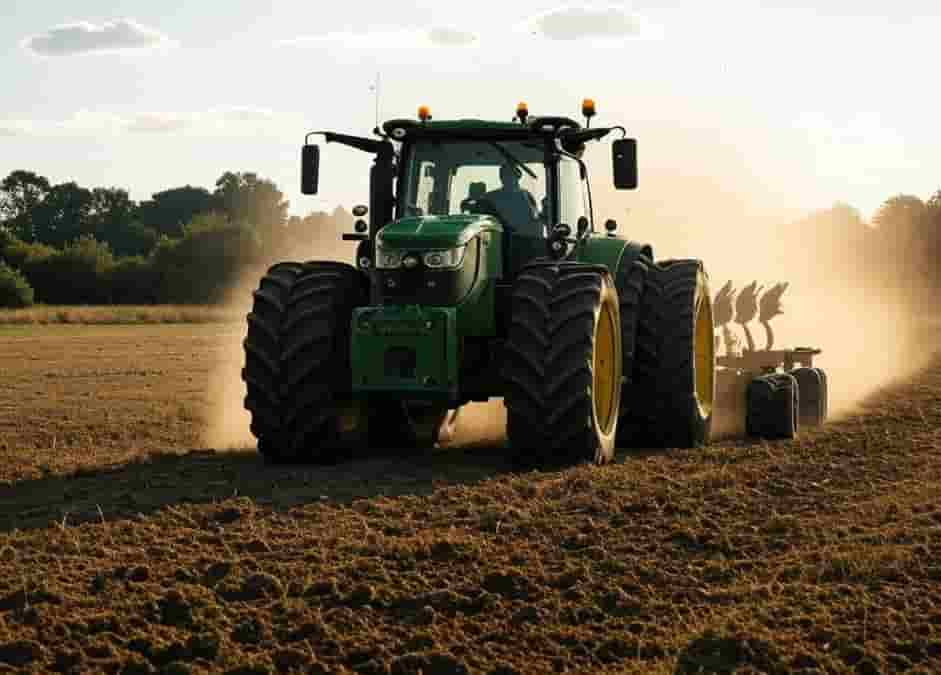Agricultural farm workers across the UK and beyond may face more than just the physical demands of farming — they may be inhaling dangerous levels of mineral dust that threaten their long-term respiratory health.
While most public conversations about farm-related illness focus on allergies and organic particles, new evidence and analysis are turning attention towards the potentially severe impact of inorganic dust exposure. These mineral dusts — primarily composed of crystalline silica and silicates — are prevalent in farming regions with dry climates and contribute significantly to airborne particulate concentrations during typical farming operations.
In these environments, routine activities such as ploughing, tilling, and soil turning can release high concentrations of respirable dust into the air. Measurements frequently record levels of 1–5 mg/m³ of respirable dust and ≥ 20 mg/m³ of total dust, placing farm operators at increased risk of lung damage over time if the control and exposure to silica dust is not implemented.
Mineral dust: A hidden culprit in chronic respiratory conditions
The specific composition of inorganic agricultural dusts often mirrors local soil content. Research indicates that crystalline silica — a known respiratory hazard — may constitute up to 20% of these airborne particles, while silicates may account for up to 80%. These concentrations are notable because prolonged exposure to crystalline silica is a recognised risk factor for chronic bronchitis, interstitial fibrosis, and other serious lung conditions.
Evidence from lung tissue analysis in affected workers reveals dust samples that directly correlate with the mineral composition of local soils. These findings strongly suggest that inorganic dusts are not only present but may be directly causative agents in the development of long-term respiratory issues among farmers.
A growing body of concern: COPD and beyond
Beyond anecdotal and isolated findings, epidemiological studies spanning multiple geographic regions have identified statistically significant increases in chronic obstructive pulmonary disease (COPD), as well as morbidity and mortality from respiratory illness among the farming population.
While mixed exposures — involving both organic (e.g., animal dander, plant particles) and inorganic dusts — are common in agriculture, distinguishing the precise health impact of mineral dusts alone is complex. Nonetheless, there is growing consensus that their role in exacerbating or initiating respiratory disease cannot be ignored.
Cases of pulmonary fibrosis and mixed dust pneumoconiosis have already been documented among agricultural workers. However, there remains a lack of comprehensive data on the prevalence and clinical severity of these conditions within the farming sector, calling for more targeted health surveillance and preventive strategies.
What this means for the agricultural workforce
For workers who spend their lives in close contact with the land, this is more than a health scare — it’s a call to action to make farms safer. Respiratory diseases such as chronic bronchitis and COPD are not simply nuisances; they can be life-limiting or even life-threatening without early intervention and proper management.
It is essential that both employers and policymakers consider the implications of inorganic dust exposure when developing agricultural health and safety frameworks. Awareness and education are critical, but so too are improved monitoring systems and protective measures, particularly in regions with high dust generation due to arid soil and mechanical farming practices.
Regular health screenings, the use of protective equipment, and investment in dust suppression technologies could all form part of a more comprehensive approach to worker safety in agricultural environments.
The Workers Union Says…
“As agriculture continues to modernise and scale up in response to demand, so too must the systems that protect its workforce. The unseen risks from mineral dust exposure are gaining recognition as a serious occupational hazard — and addressing them requires urgency, transparency, and a commitment to safeguarding those who work the land.”




